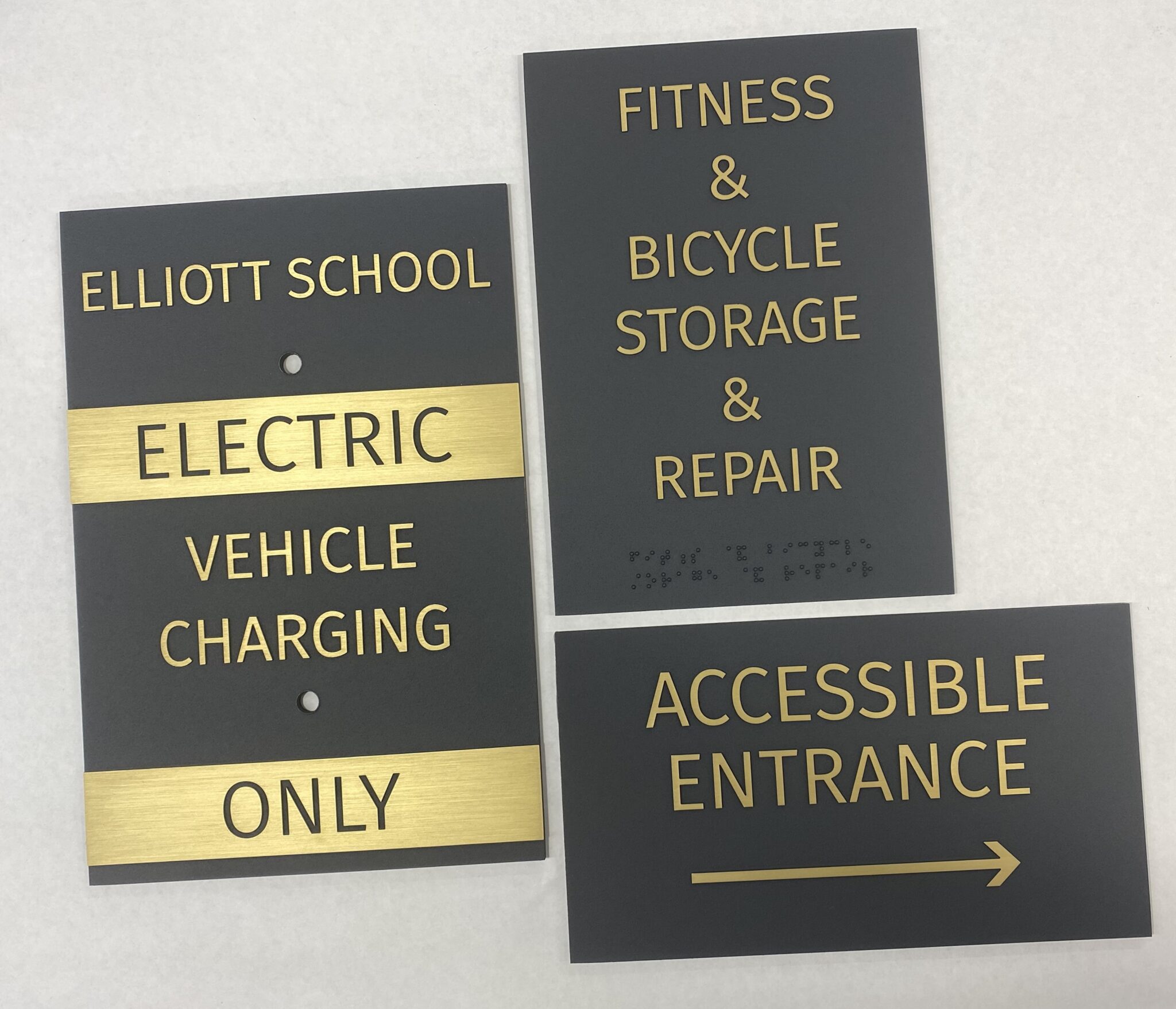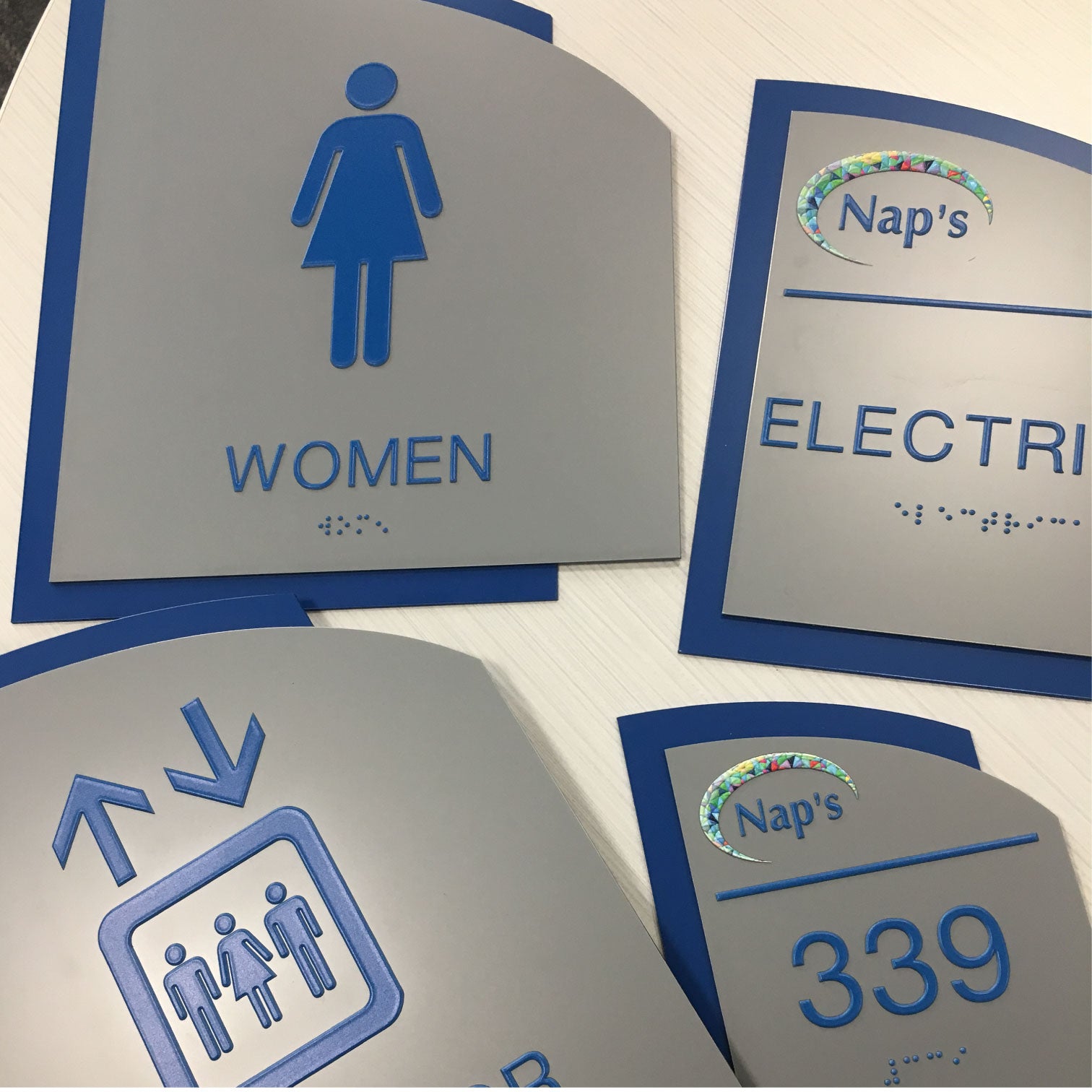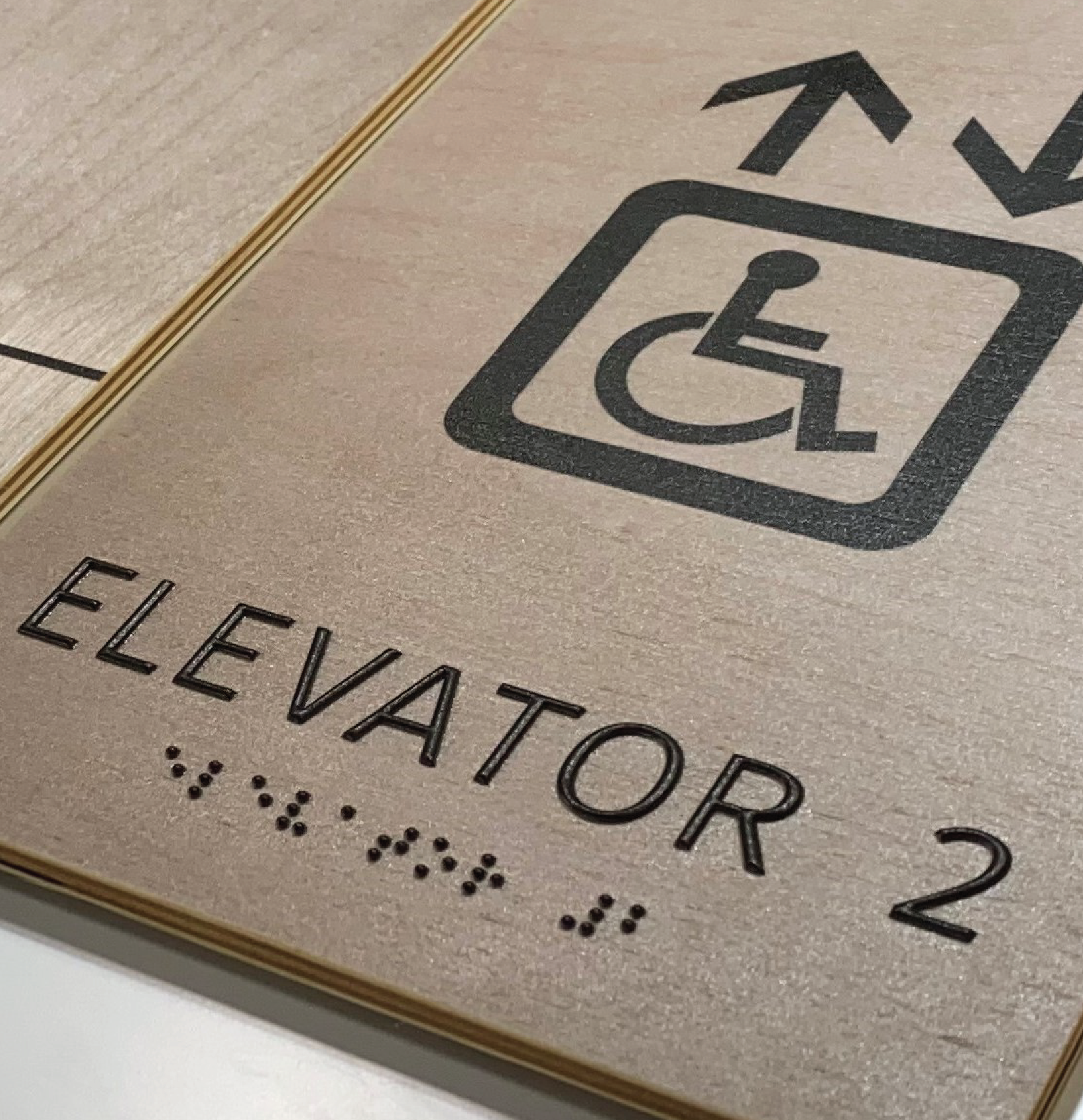Checking Out Creative Designs for Reliable ADA Signs
Checking Out Creative Designs for Reliable ADA Signs
Blog Article
Checking Out the Secret Functions of ADA Signs for Improved Ease Of Access
In the world of access, ADA indications act as silent yet effective allies, ensuring that spaces are navigable and inclusive for individuals with disabilities. By integrating Braille and tactile elements, these indications damage obstacles for the aesthetically damaged, while high-contrast color pattern and legible font styles satisfy varied aesthetic demands. Their strategic positioning is not approximate yet rather a calculated initiative to assist in smooth navigating. Past these attributes exists a deeper story concerning the evolution of inclusivity and the ongoing commitment to producing equitable spaces. What more could these indicators indicate in our search of universal access?
Relevance of ADA Compliance
Making certain compliance with the Americans with Disabilities Act (ADA) is crucial for fostering inclusivity and equivalent access in public areas and offices. The ADA, established in 1990, mandates that all public facilities, employers, and transport services accommodate individuals with specials needs, guaranteeing they appreciate the exact same rights and opportunities as others. Conformity with ADA standards not only fulfills legal responsibilities yet additionally boosts a company's reputation by showing its commitment to variety and inclusivity.
Among the crucial elements of ADA conformity is the implementation of easily accessible signage. ADA signs are created to make sure that individuals with handicaps can conveniently navigate with rooms and structures. These indicators have to stick to details standards relating to dimension, font, shade contrast, and positioning to guarantee visibility and readability for all. Properly carried out ADA signs helps remove obstacles that individuals with disabilities usually encounter, therefore promoting their self-reliance and confidence (ADA Signs).
Moreover, sticking to ADA laws can reduce the risk of prospective fines and legal repercussions. Organizations that fall short to comply with ADA guidelines might face suits or fines, which can be both damaging and economically difficult to their public photo. Therefore, ADA compliance is integral to cultivating a fair atmosphere for everyone.
Braille and Tactile Elements
The consolidation of Braille and responsive aspects into ADA signs personifies the concepts of accessibility and inclusivity. It is commonly placed below the equivalent text on signage to make sure that people can access the info without visual support.
Responsive aspects prolong beyond Braille and include raised personalities and symbols. These components are made to be noticeable by touch, enabling individuals to identify space numbers, toilets, departures, and other vital areas. The ADA sets particular guidelines relating to the size, spacing, and positioning of these tactile components to optimize readability and ensure consistency throughout various environments.

High-Contrast Color Plans
High-contrast shade systems play a pivotal duty in improving the exposure and readability of ADA signage for people with visual problems. These schemes are crucial as they make best use of the distinction in light reflectance in between text and background, making certain that indicators are easily noticeable, also from a range. The Americans with Disabilities Act (ADA) mandates the usage of specific color contrasts to suit those with minimal vision, making it a critical facet of compliance.
The effectiveness of high-contrast colors hinges on their ability to stand apart in different illumination problems, consisting of poorly lit atmospheres and locations with glow. Generally, dark text on a light background or light message on a dark history is utilized to accomplish optimum comparison. Black text on a white or yellow background provides a plain aesthetic distinction that helps in quick acknowledgment and comprehension.

Legible Fonts and Text Dimension
When taking into consideration the layout of ADA signage, the choice of understandable typefaces and ideal text size can not be overstated. The Americans with Disabilities Act (ADA) mandates that fonts must be sans-serif and not italic, oblique, script, extremely ornamental, or of unusual form.
The size of the message also plays a critical role in my website access. According to ADA guidelines, the minimal message height need to be 5/8 inch, and it ought to boost proportionally with seeing range. This is particularly crucial in public spaces where signage needs to be checked out right here rapidly and properly. Consistency in message size contributes to a natural visual experience, aiding people in navigating environments successfully.
Moreover, spacing between letters and lines is essential to clarity. Adequate spacing avoids characters from appearing crowded, improving readability. By sticking to these requirements, developers can significantly boost availability, guaranteeing that signage offers its intended objective for all people, regardless of their aesthetic capacities.
Effective Placement Approaches
Strategic placement of ADA signs is crucial for maximizing accessibility and guaranteeing compliance with lawful criteria. ADA standards stipulate that indicators must be placed at a height between 48 to 60 inches from the ground to ensure they are within the line of view for both standing and seated people.
Additionally, indicators must be positioned beside the lock side of doors to enable very easy recognition prior to entry. This positioning aids individuals find areas and rooms without blockage. In instances where there is no door, indicators need to be located on the nearest adjacent wall surface. Consistency in sign placement throughout a facility improves predictability, minimizing complication and boosting general customer experience.

Conclusion
ADA indications play an essential role in promoting availability by incorporating features that deal with the requirements of individuals with handicaps. Incorporating Braille and tactile elements makes sure crucial information is available to the read the full info here aesthetically damaged, while high-contrast color pattern and clear sans-serif fonts enhance presence throughout various illumination problems. Effective placement techniques, such as appropriate installing heights and tactical places, further promote navigation. These aspects jointly cultivate a comprehensive atmosphere, emphasizing the relevance of ADA compliance in ensuring equal accessibility for all.
In the realm of availability, ADA signs offer as silent yet powerful allies, ensuring that spaces are navigable and inclusive for individuals with impairments. The ADA, established in 1990, mandates that all public centers, companies, and transportation solutions fit people with handicaps, guaranteeing they enjoy the exact same rights and opportunities as others. ADA Signs. ADA signs are created to make certain that individuals with impairments can easily browse via rooms and structures. ADA guidelines stipulate that indications should be installed at an elevation in between 48 to 60 inches from the ground to ensure they are within the line of sight for both standing and seated individuals.ADA signs play a vital function in promoting availability by integrating functions that deal with the requirements of people with specials needs
Report this page